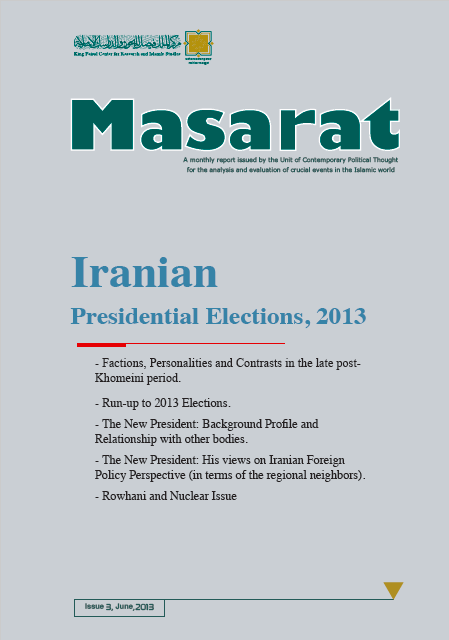Iranian Presidential Elections 2013
(.Issue 3. June 2013 (Rajab 1434 H
Abstract
For over three decades, presidential elections in Iran have been a defining moment of transition in different political periods of the Islamic Republic. A unique state institution, the presidency in Iran is at once hampered by constitutional restrictions on the power and authority of its incumbent and a desired target for factions internal to the political regime and ambitious politicians alike. The eleventh presidential elections of the Islamic Republic were held on 15 June 2013 and presented several marked differences with respect to the previous presidential contest of 12 June 2009. The most visible of these was the absence of any sizable instances of violence, both before and after the poll, and of any intra-elite strife. None of the campaign teams furthermore produced complaints of broad or systematic fraud and accepted the results swiftly. All of this is in marked contrast to four years ago, when two of the four final candidates, Mir-Hossein Mousavi and Mehdi Karroubi, voiced concern about the possibility of wide scale falsification of the electoral results prior to the vote and then effectively never recognized the validity of the results released by the Interior Ministry, setting off waves of protest, strife and inner-regime crisis that are yet to be fully resolved. This issue of Masarat will focus on the recent presidential elections to better predict the future of Iranian foreign policy and its nuclear program.

